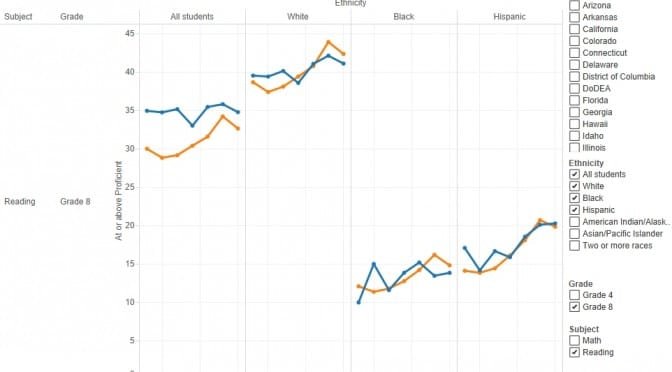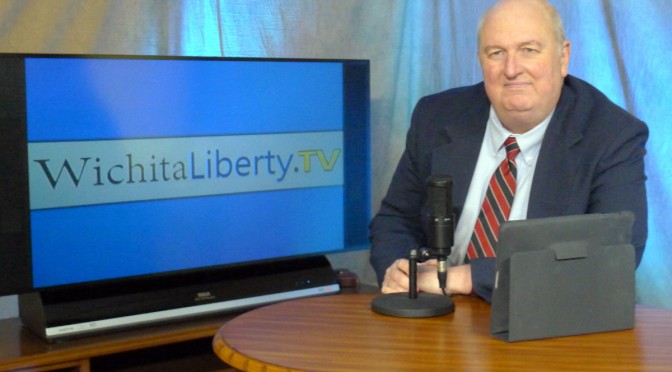 From Kansas Policy Institute.
From Kansas Policy Institute.
Kansas Association of School Boards: Putting institutions and money before individual students
By Dave Trabert
There is no question that many students receive a fine public education and go on to success in college or career, but there is also no question that thousands of students are left behind every year. Continuing to pour money into the current broken system — whether ordered to so by courts or by choice — will not close the large achievement gaps that exist for students of color and those from low-income families.
Yet institutional demands for more money continue to drive the debate. Many mission statements effectively say “it’s all about the kids” but in reality, the wants of institutions and the adults in the system often prevail over student needs.
A recent blog post from Mark Tallman and the Kansas Association of School Boards (KASB) is loaded with more examples of institutions misrepresenting the facts of student achievement and school funding to justify the extraction of more money from taxpayers.
Here’s the first example. “KASB research has shown that the percentage scoring at Basic is a good indicator of the state’s graduation rate, i.e. the percentage of students who complete high school. The percentage scoring at Proficient is a rough indicator of the percentage of students who will meet college readiness benchmarks on the ACT test. In other words, the percent at Basic might be considered the percentage of student “on track” to graduate, and the percent at Proficient indicates those “on track” to be ready for college-level academics.”
First of all, a high school graduation rate says nothing about actual achievement. In fact, the Kansas Board of Regents reports that 30 percent of 2011 Kansas high school graduates who attended a public college in Kansas actually signed up for remedial training – keep in mind that students voluntarily sign up for these courses and cannot be made to do so by the college. These students apparently know that they aren’t ready to take credit-bearing courses in college. Also, only 30 percent of the 2013 class who took the ACT test scored high enough to be considered college-ready in English, Reading, Math and Science. (Incredibly, KASB representative Tom Krebs testified earlier this year that the ACT college-readiness measure shows that local school districts are doing a good job — because only 30 percent of today’s jobs require a 4-year degree!)
Also, the KASB research that purports to find ‘good indications’ is called a bivariate analysis, meaning that only two variables are considered. This reminds me of something the late Senator Daniel Patrick Moynihan (D-NY) once said with tongue firmly planted in cheek. He noted that northern states tended to have the best student achievement, so we should move schools closer to the Canadian border to improve achievement. His point was that simple bivariate analyses and non sequiturs are no substitution for honest analysis. A bivariate analysis doesn’t control for other factors that may (and frequently do) make a difference.
Note also that KASB continues to lower the bar and now often speaks of the percentage of students at Basic+ instead of Proficient+ on the National Assessment of Educational Progress (NAEP). They referenced high rankings on Proficient+ until people became aware that Kansas’ proficiency levels are in the 30 percent and 40 percent range. Now they talk about Basic+ so they can use higher percentages and make the institutions look better.
Example #2
On October 7, Mr. Tallman wrote, “KASB absolutely agrees that differences in student characteristics must be considered in evaluating educational performance … the most important factor .. is socio-economic status.”
But that “belief” is largely ignored on October 11 when he writes, “To measure overall state performance, we calculate the average of the percentage of students scoring at both Basic and Proficient on the four tests (Grade 4 reading and math; Grade 8 reading and math). We then rank the average percent for each state.” Two of the four percentages he averaged are based on All Students, which brings the mostly-White states to the top of his list. You see, students of color are two to three years’ worth of learning behind White students, so the states with highest overall average performance are those with the lowest levels of minorities. (This is the essence of Senator Moynihan’s observation.)
Similar achievement gaps exist between low income students and others. And since Census data shows that minorities are twice as likely to live in poverty as Whites, KASB’s deliberate decision to not control for race and income produces very predictable results that are favorable to their overall point (it’s all about the money). Every state in the KASB calculation of the Top Ten states in Reading and Math has Free and Reduced Lunch Eligibility levels below the national average of 48.1 percent. Most of them are well below. The point of KASB’s exercise is of course about money. The states chosen to appear in their top ten all spend more than Kansas.
Example #3
“The State Board of Education has continued to set higher standards.” That’s a real whopper. Our research shows how and when the Kansas State Board of Education chose to reduce performance standards, to the point where the U.S. Department of Education reports that Kansas has some of the lowest performance standards in the nation. Before publishing our findings, we asked KSDE and KBOE to let us know if there was anything factually incorrect in our work. They didn’t respond.
Example #4
“Economic data indicates Kansas must increase the percentage of high school graduates and college-ready students to meet future employment needs and provide “middle class” incomes.” It’s true that people with more education are able to earn more money but that speaks to the important of getting an education. It has nothing to do with the amount taxpayers are expected to spend on public education.
Example #5
“New national reports have indicated Kansas has further reduced spending compared to most states.” This is a reference to a bogus claim made by the Center on Budget and Policy Priorities, which we completely de-bunked in a separate blog post. CBPP does not publish their data; they only share their “conclusions.” Our request to see their data has gone unanswered. Meanwhile, KSDE data shows that new records for school funding were set in 2012 and 2013 and are predicted to be broken again in 2014.
Example #6
This final example represents the culmination of all the previous misrepresentations. “The totality of the evidence indicates that funding does play an important role in state student achievement and that it will be extremely difficult — and, in fact, unprecedented — for Kansas to improve achievement on NAEP results without additional revenues.” The data, however, tells a much different story.
No change on NAEP scores despite a 32 percent inflation-adjusted increase in per-pupil spending since 1998 (even with all KPERS spending removed, it’s still a 29 percent increase).

ACT scores are flat overall, although White scores slightly increased over the last ten years while scores for Hispanic and African American students are flat or down a bit. ACT doesn’t publish income-based scores.

And after nearly $3 billion in targeted At Risk (low income) spending, there’s virtually no improvement in those students’ achievement.

Yep … it’s all about the money. It’s all about demands to put more money into a system despite voluminous evidence that large funding increases have not closed student achievement gaps and roughly half of all Kansas students are clearly not leaving high school ready for college or careers.
These large achievement gaps do not exist because those students cannot learn, but because they do not have equal access to educational opportunities. Kansas has tried ‘throwing money at the problem’ and it has not worked. Until elected officials and citizens support implementation of student-focused funding and other policy initiatives, they are tacitly choosing to place a higher priority on institutional wants than on student needs.
P.S. We’re working with legislators and school districts to show how a lot more money can be made available to classrooms by improving district efficiency. It costs a lot of money to fund public education, but it’s how the money is spent that matters … not how much.








 Mark Tallman, associate executive director for advocacy at
Mark Tallman, associate executive director for advocacy at 







